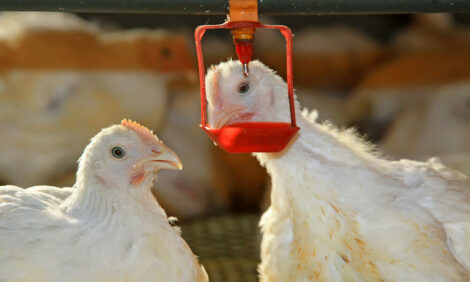



CME: Grain and Protein Supplies Down
US - USDA provided yesterday its latest forecasts on grain and protein supplies for 2011/12 and the data generally was more negative than the August forecast, write Steve Meyer and Len Steiner.On the grain front, USDA lowered its estimates of US corn yields this fall. The reduction was hardly surprising given the recent flurry of private analyst reports with lower yield estimates as well as the weekly USDA crop progress report showing deteriorating corn crop conditions.
The lower yields are reverberating throughout the industry as this is the first time since 1995/96 that the annual corn yield is expected to be lower than the 10-year yield average. One of the arguments given in the last decade for boosting farm supplies is that technology will come to the rescue and resolve the tension behind rising global demand and limited natural resources.
The argument was that developments in new cultivars would help boost yields and allow US farmers to continue to meet growing demand. It remains to be seen what science will provide down the road but, at the moment, the corn crop has hit a speed bump in term of yields and exacerbated an extremely tight supply situation.
A recent Wall Street Journal article highlighted the challenges in this front by pointing out that western corn rootworms had ‘evolved to resist the natural pesticide made by Monsanto’s corn plant”. The latest USDA corn yield estimate is now pegged at 148.1 bushels per acre, almost five bushels per acre lower than the August estimate and about 10 bushels per acre from the July estimate.
The reduction in yield estimates removed more than 400 million bushels from an already very tight supply/demand balance sheet. The most recent USDA report allocates where the reduction in supply will likely occur. The biggest loser into next year will likely be the livestock and poultry industry, with feed use expected to decline some 300 million bushels from the previous year and 200 million bushels lower than the August estimate.
Part of the reduction in feed use reflects higher DDG use in cattle and, to a lesser extent, pork and poultry. However, the reduction in feed use reflects lower animal units expected to come to market in the next 12 months.
Forget about expanding the herds and boosting supplies to alleviate some of the price spikes. The latest USDA report indicates that meat protein price inflation will likely be the theme again next year.
The USDA table also accounts for a 100 million bushel reduction in ethanol use. There is some argument that ethanol use could be lower should Congress phase out ethanol subsidies and supports.
However, there is too much unknown in that front and there is no questioning that ethanol demand will also depend greatly on what happens with crude oil prices. Finally, USDA reduced corn exports by another 100 million bushels. China has emerged recently as a large buyer of corn in the global market and reducing exports by 200 million bushels year over year given this demand will also be a significant challenge.

Further Reading
| - | You can view the full report by clicking here. |









